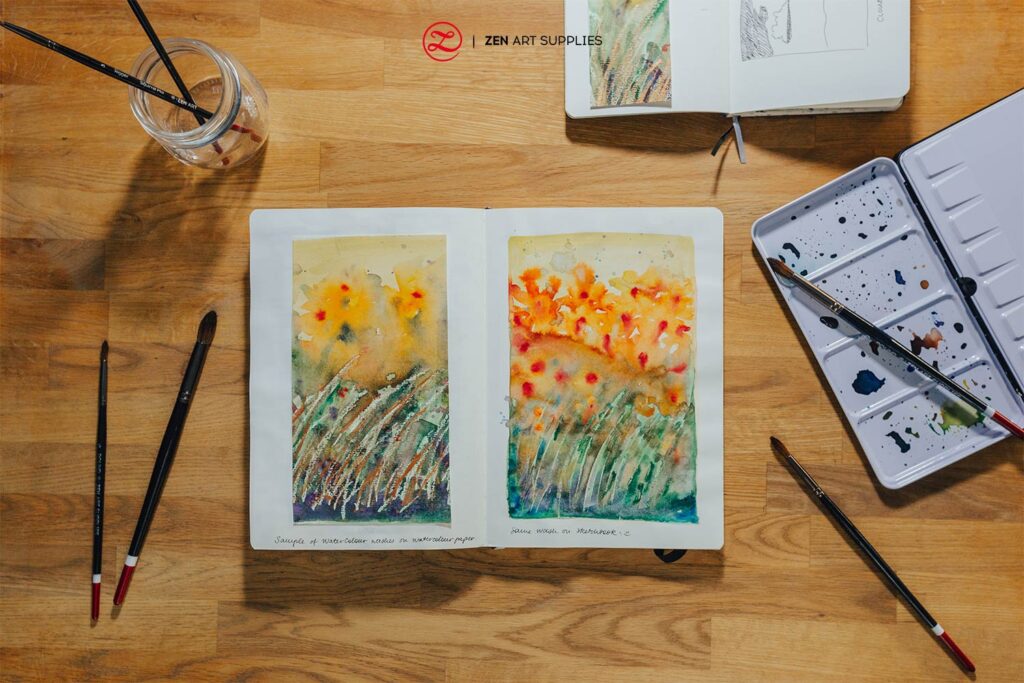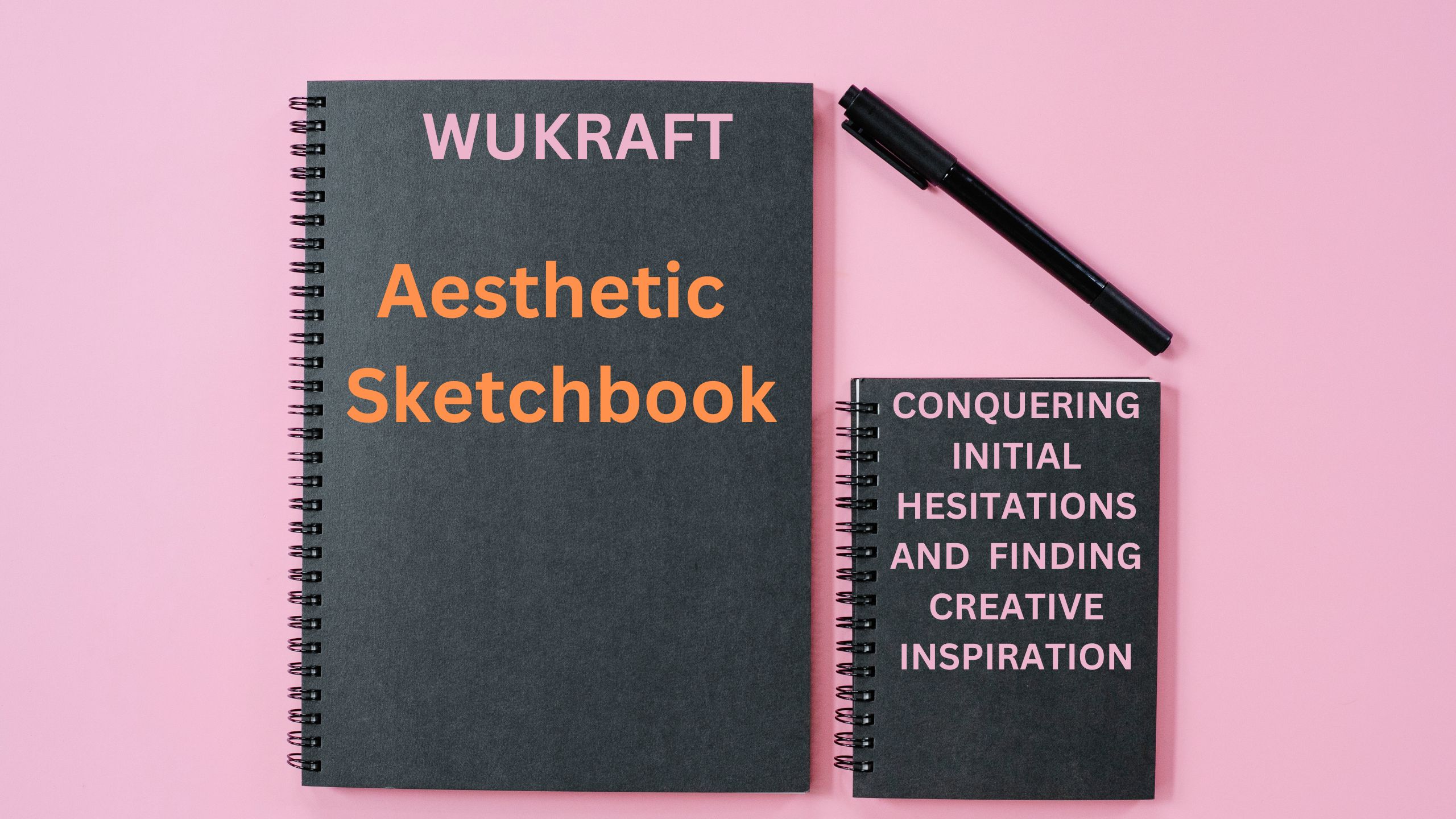
How to Start an Aesthetic Sketchbook
Starting an aesthetic sketchbook can be daunting, but it’s also a lot of fun. Here are some tips and tricks to get you started:
- Choose the right sketchbook. There are many different types of sketchbooks available, so it’s important to choose one that’s the right size and type of paper for you. If you’re not sure, ask a salesperson for help.
- Don’t be afraid to experiment. There are no rules when it comes to creating an aesthetic sketchbook. Experiment with different mediums, colors, and styles to see what you like best.
- Don’t worry about perfection. This is your sketchbook, so don’t worry about making mistakes. Just have fun and be creative.
- Get inspired. Look for inspiration in everyday life, in art books, or online. There are many resources available to help you find inspiration.
- Start small. If you’re feeling overwhelmed, start with a small project, such as drawing your favorite object or creating a simple collage.
Overcoming Your Fear of Starting
It’s common to feel afraid of starting a new sketchbook. After all, you don’t want to ruin it with a mistake. Here are a few tips to overcome your fear:
- Remember that the sketchbook is yours. You can do whatever you want with it. There are no rules.
- Start with a simple warm-up. Doodle or draw anything that comes to mind. This will help you get the creative juices flowing.
- Don’t be afraid to make mistakes. Mistakes are a part of the creative process. Just keep going and don’t worry about them.
- Give yourself permission to experiment. Try new things and see what works for you. The most important thing is to have fun.
Ideas and Inspiration

Here are a few ideas and inspiration for creating an aesthetic sketchbook:
- Draw your favorite things. This could be anything from your favorite animal to your favorite food.
- Create collages. Use magazine clippings, photos, or other materials to create unique and interesting collages.
- Write in your sketchbook. Use your sketchbook to write down your thoughts and feelings, or to create poems or stories.
- Experiment with different mediums. Try using different types of paint, markers, or colored pencils.
- Add stickers or washi tape. Stickers and washi tape are a great way to add personality to your sketchbook.
Don’t be afraid to be creative and have fun with your aesthetic sketchbook. It’s a great way to express yourself and experiment with different art techniques.
Here are some more specific details about how to create an aesthetic sketchbook:
- Choose a theme. This is optional, but it can help you get started. Some common themes for aesthetic sketchbooks include nature, flowers, food, animals, and fashion.
- Use color palettes. Color palettes can help you create a cohesive and visually appealing sketchbook. You can find pre-made color palettes online or create your own.
- Add decorative elements. Stickers, washi tape, glitter, and other decorative elements can add personality and interest to your sketchbook.
- Don’t be afraid to mix and match mediums. Try using different types of paint, markers, colored pencils, and collage materials to create unique and interesting effects.
- Have fun! The most important thing is to enjoy the process of creating your aesthetic sketchbook. Don’t worry about making mistakes or being perfect. Just relax and let your creativity flow.

Don’t be afraid of your sketchbook. It is a safe space to explore your creativity and experiment with different ideas. Don’t worry about making mistakes or creating something perfect. Just have fun and enjoy the process.
Here are some more details about how to let go of your fear of your sketchbook:
- Remember that your sketchbook is just for you. No one else has to see it unless you want them to. So don’t worry about what other people will think.
- Give yourself permission to make mistakes. Mistakes are a natural part of the creative process. In fact, they can lead to happy accidents and new ideas.
- Don’t compare yourself to other artists. Everyone has their own unique style and perspective. Focus on developing your own voice and style.
- Don’t be afraid to experiment. Try different mediums, colors, and techniques. See what works for you and what doesn’t.
- Have fun! Creativity should be enjoyable. If you’re not having fun, you’re less likely to stick with it.
Here are some additional tips for using your sketchbook without fear:
- Start with a simple warm-up. Doodle or draw anything that comes to mind. This will help you get the creative juices flowing and loosen up your hand.
- Don’t be afraid to let go of control. Sometimes the best way to create something beautiful is to let go of control and let the art take you where it wants to go.
- Don’t worry about finishing everything. It’s okay to leave sketches unfinished. Sometimes coming back to them later with fresh eyes can lead to new insights.
- Use your sketchbook to document your creative journey. Don’t just use it to create finished artworks. Use it to track your progress, experiment with new ideas, and capture your thoughts and feelings.
Remember, your sketchbook is your playground. So don’t be afraid to get creative and have fun with it.
Conquering the Fear of the First Page
Navigating the first page of a fresh sketchbook is a thrilling yet daunting challenge that confronts every artist. The anticipation that this initial page bears the responsibility of establishing the tone and determining the potential success of the pages that will ensue can be quite intimidating. It’s interesting to note that this very anxiety about the first page often serves as a significant obstacle, causing artists to delay their creative endeavors or, in some cases, abstain from utilizing their sketchbooks altogether.

Nevertheless, a straightforward remedy for the anxiety that accompanies the first page can be found in a simple strategy: planning out your page’s content in advance. This involves the creation of miniature thumbnail sketches to experiment with different layouts and gain a clear vision of your desired sketchbook composition. Engage in an exploratory process with your design, and once you’ve achieved a satisfying arrangement, commit it to your art sketchbook. It’s a remarkably straightforward approach.
Interestingly, some experienced artists propose an unconventional tactic: bypassing the first page altogether and beginning your creative journey on page two or any other page in your mixed media sketchbook. This unorthodox strategy effectively nullifies the mental blocks and pressures associated with that initial page, making it markedly easier to initiate subsequent artistic endeavors in your journal. Another intriguing idea involves taking random pages in your sketchbook and adorning them with colorful washes or pasting snippets from magazines and books. This allows you to introduce a vibrant and diverse array of elements right from the outset, nurturing a sense of creativity and freedom as you embark on your artistic journey.
Maintaining multiple sketchbooks

Maintaining multiple sketchbooks can be a valuable strategy if you’re aiming for a consistent and distinct aesthetic in your artwork. These sketchbooks can serve different purposes, and having a variety of them at your disposal can be quite beneficial.
Consider using more affordable sketchbooks as your personal art journals. In these, there are no creative boundaries, and you can freely experiment, jot down ideas, and simply have fun. These sketchbooks can serve as a creative playground where you’re not constrained by any limitations. Interestingly, they can also serve as a breeding ground for ideas and concepts that may eventually find their way into your public sketchbooks. It’s important to remember that you have complete control over what you choose to share with the world and what remains private.
Additionally, it’s a good idea to designate a specific sketchbook for honing your art skills. This sketchbook is your practice ground, where you can work on enhancing your fundamental artistic abilities. You can use it to experiment with various aspects of art, such as composition, color theory, perspective, and the play of light and shadow. Moreover, it’s an ideal place to tackle subjects or techniques that you may find challenging. The key takeaway here is that practice is the path to improvement in your artistic journey.
In essence, by keeping different sketchbooks for different purposes, you not only maintain a cohesive aesthetic but also have a structured approach to your artistic development. Your private sketchbooks allow for unrestricted creativity, while your practice sketchbook serves as a dedicated space for skill refinement and growth. Ultimately, these multiple sketchbooks can be powerful tools to help you express your creativity and enhance your artistry.

Start an art journal
Commencing an art journal is a delightful and therapeutic practice embraced by numerous artists. This personalized sketchbook serves as a canvas for self-expression and can adopt various themes. Whether you opt for a travel journal, a nature journal dedicated to observing the natural world, or a daily journal that accompanies you everywhere, an art journal offers the perfect avenue to nurture your creativity.
Art journals often feature live studies, which add an exciting dimension to your artistic journey. The absence of strict rules within these sketchbooks allows you to blend visual art with written expression. You can document your daily experiences, pair your sketches with poems, or let your imagination take you wherever it pleases. Your art journal is a reflection of your unique creative spirit, and you have the freedom to mold it into whatever form resonates with you.
In essence, an art journal is more than just a sketchbook; it’s a captivating canvas where art and personal narrative intertwine. It’s a sanctuary for your thoughts, observations, and artistic exploration, making it a cherished tool for fostering creativity and self-expression.
Follow like-minded artists
When you need a creative boost, follow like-minded artists on social media or visit their websites. Scrolling through their work can spark new ideas and inspire you to create something new. This is especially helpful if you’re feeling unmotivated or stuck.
Here are some tips for finding like-minded artists to follow:
- Look for artists who work in your preferred medium or style.
- Search for artists who create art about subjects that you’re interested in.
- Join online art communities or forums.
- Attend art exhibitions and events.
- Ask other artists for recommendations.
Once you’ve found some artists that you admire, make a habit of checking out their work regularly. You can follow them on social media, subscribe to their email lists, or visit their websites. Pay attention to the techniques they use, the subjects they explore, and the overall aesthetic of their work.
When you’re feeling uninspired, take some time to scroll through the work of your favorite artists. You may find yourself inspired to try a new technique, explore a new subject, or simply to start creating again.
Here are some additional benefits of following like-minded artists:
- Learn new techniques and styles. By seeing how other artists work, you can learn new techniques and styles that you can incorporate into your own work.
- Stay motivated and inspired. Seeing the amazing work that other artists are creating can motivate you to keep creating and to push yourself creatively.
- Build a supportive community. Connecting with other artists can help you to build a supportive community where you can share your work, get feedback, and learn from each other.
Overall, following like-minded artists is a great way to stay inspired and to grow as an artist.




